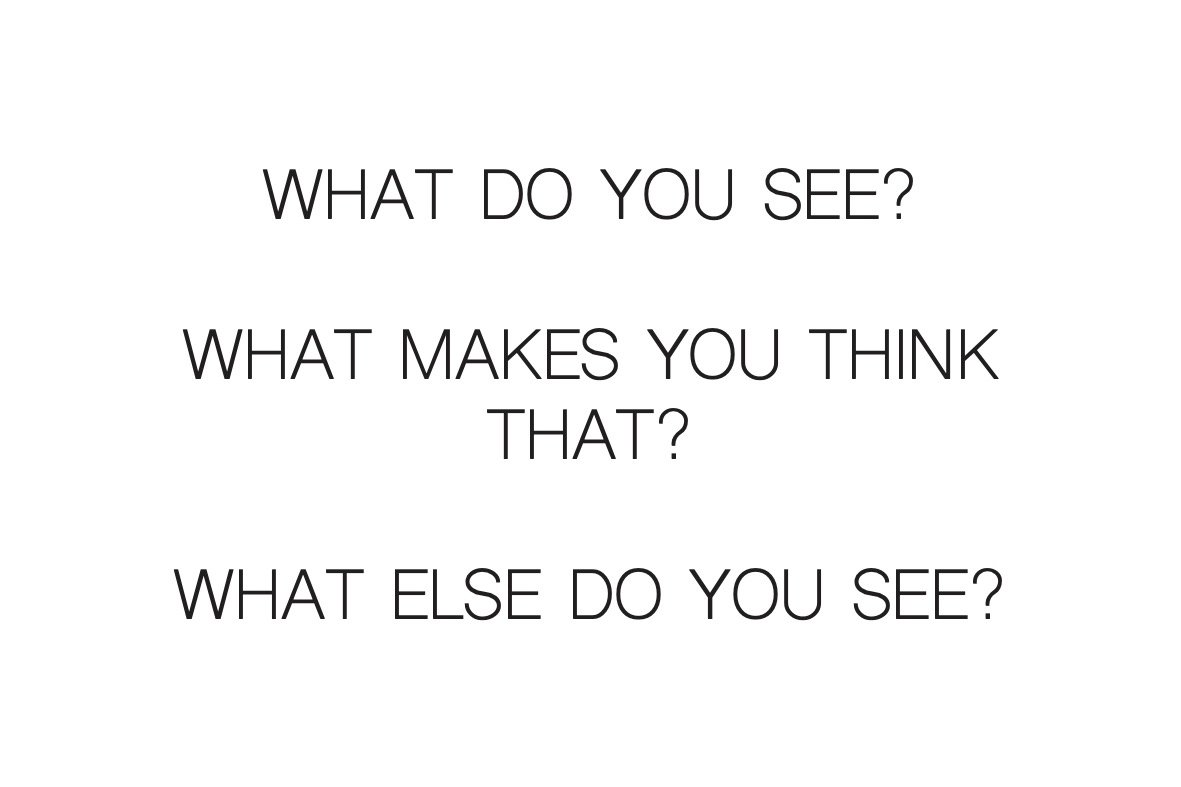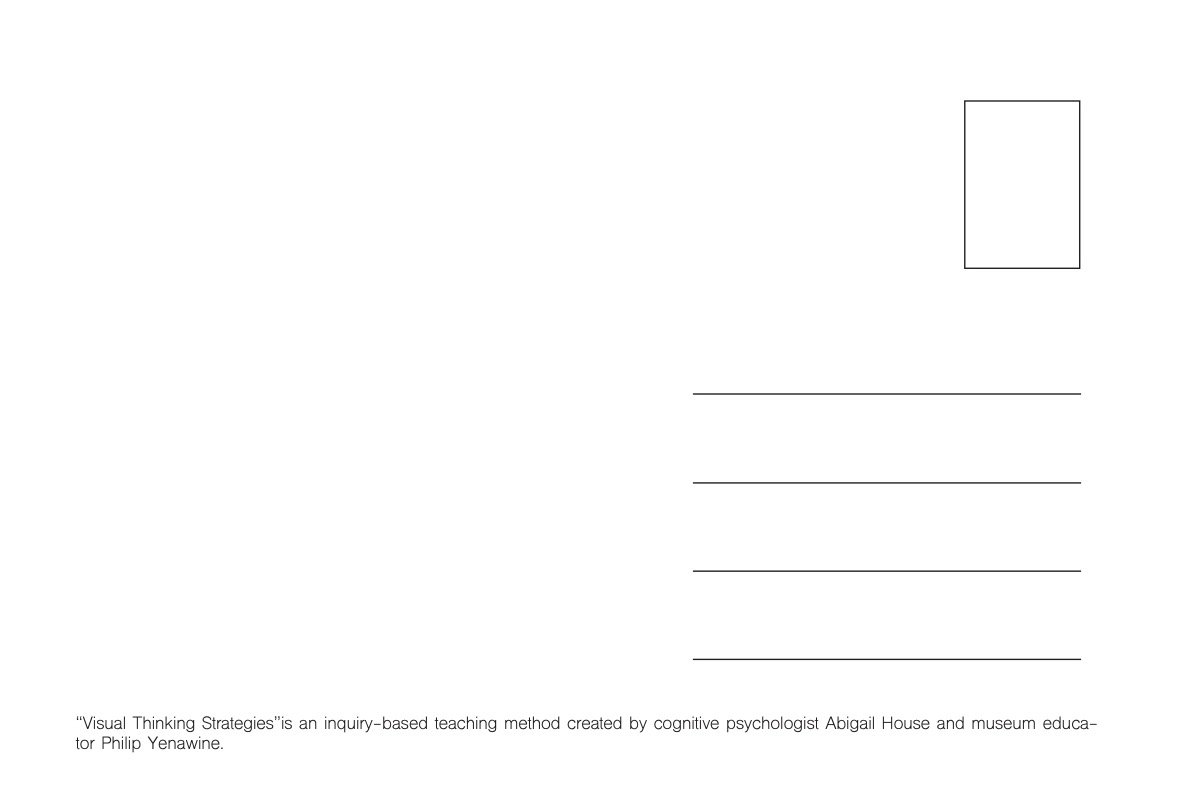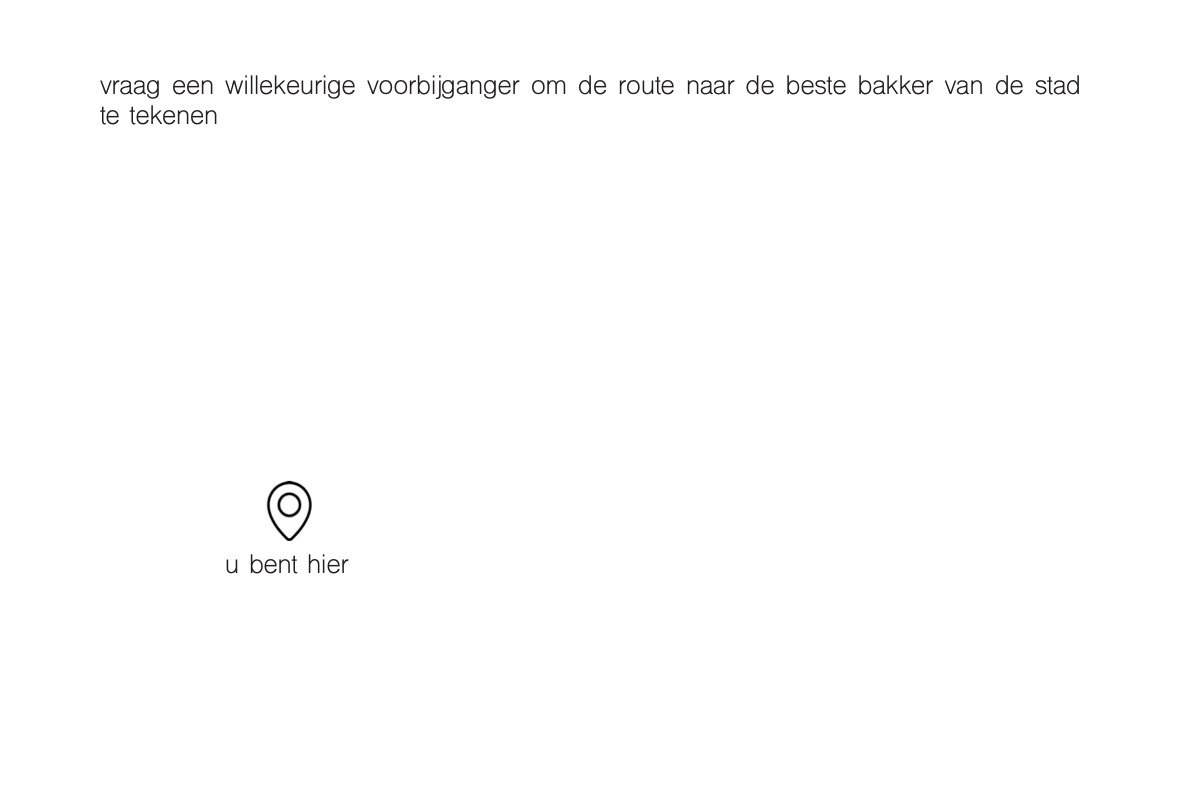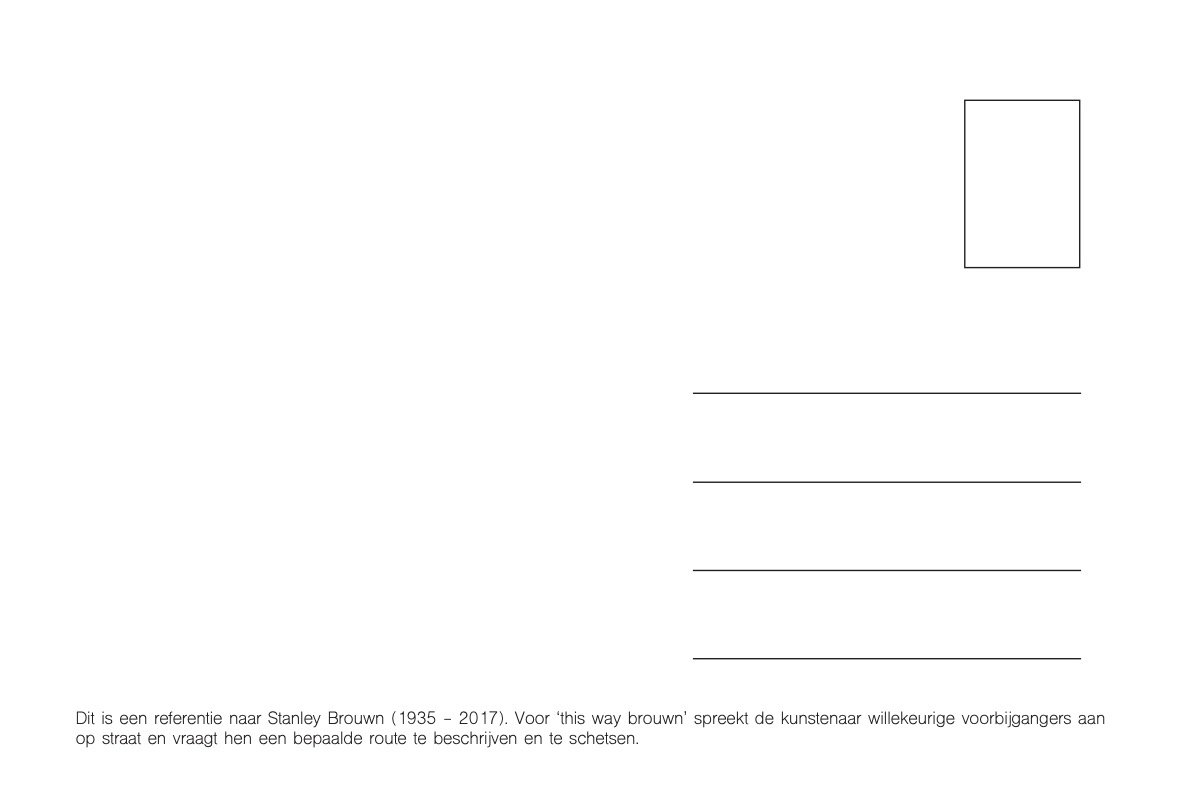a walk during which the participants will tread their own route and take a few stops designed in such a way that the artist can share her fascination with art history, history of walking, city development, psychology, and other fields is a research and a reflection on the transitions on how people relate to the cities.
As a certified guide, I use the canvas of a classic tour, deconstruct it and weave new elements in it, such as artistic practices or personal interest in urban development, psychology, societal dynamics, linguistics. This walk is an experience where the participants actively create memories and thus manipulate their own relationship with a/the given city.
Presentations:
24 April ‘22 — Turnhout — Turnhout en rekto:verso presenteren: Turnhout-Centraal
1 May ‘22 — Geraardsbergen — Opening in Denderland
13 May ‘22 — Ghent — Kunsthal
17 & 19 Februari ‘23 — Brussels — nadine
21 april ‘24 — Ronse — CC De Ververij
This work is the result of research supported by the Flemish Government (Arts Decree).
It all started with the question: "How did Ghent become my city?" In 2013, I moved to Belgium and relied heavily on GPS for orientation, as the language barrier was not particularly helpful. Now, 10 years later, I not only know the city better than my GPS but also feel at home in the social space. I can hardly go for a walk without bumping into someone I know. I was deeply fascinated by the transformation that had gone unnoticed. How does someone who has lived their whole life in a city view it? How does that differ from the perspective of a newcomer or a tourist? For example, it's striking that we visit museums abroad much more often than in our own cities, isn't it? Most people do, I think. I decided to make a comparison between different cities: the city I come from (Moscow), the city where I lived (Rotterdam), the city I commuted to for work (Brussels at that time), the city I now call home (Ghent), and a city I had never been to (Dublin).
Due to the outbreak of the war, I couldn't visit Moscow and Dublin. The literature study I conducted during the development of the research, and in particular, Lauren Elkin's book "Flaneuse," opened my eyes to the potential of walking. Walking in a group in public space, walking as a woman in public space, and so on. During the research, I met other walking artists and experts, and we went for walks in different cities while discussing various topics. This unexpectedly led to new work: a performative collection of experiences in and of the city. For 2-3 hours, I walk with the group through the city. The group determines the route, and I take over when the group stops, offering various approaches inspired by a range of sources, from guide techniques (Visual Thinking Strategies) to artistic works (Stanly Brouwn, Yoko Ono, Hilary Ramsden, ...). At the end of the walk, participants receive an envelope with postcards referring to the experiences during the walk.
I consider this work to be a living archive that continues to grow. The collection of postcards and the experiences they represent can still be expanded.
a walk during which the participants will tread their own route and take a few stops designed in such a way that the artist can share her fascination with art history, history of walking, city development, psychology, and other fields, AWS, Ghent, 2022
a walk during which the participants will tread their own route and take a few stops designed in such a way that the artist can share her fascination with art history, history of walking, city development, psychology, and other fields is een onderzoek en een reflectie op de veranderingen in hoe mensen zich tot steden verhouden.
Als gecertificeerde gids gebruik ik het canvas van een klassieke rondleiding, deconstrueer het en weef er nieuwe elementen in, zoals artistieke praktijken of persoonlijke interesse in stadsontwikkeling, psychologie, maatschappelijke dynamiek en taalkunde. Deze wandeling is een ervaring waarbij de deelnemers actief herinneringen creëren en zo hun eigen relatie met een/de gegeven stad kunnen beïnvloeden.
Presentaties:
24 april ‘22 — Turnhout — Turnhout en rekto:verso presenteren: Turnhout-Centraal
1 mei ‘22 — Geraardsbergen — Opening in Denderland
13 mei ‘22 — Gent — Kunsthal
17 & 19 februari ‘23 — Brussel — nadine
Dit werk is het resultaat van een onderzoek dat gesteund werd door de Vlaamse Overheid (Kunstendecreet).
a walk during which the participants will tread their own route and take a few stops designed in such a way that the artist can share her fascination with art history, history of walking, city development, psychology, and other fields, Eric Colpaert, Geraardsbergen, 2022
Het begon allemaal met de vraag: 'Hoe is Gent mijn stad geworden?' In 2013 ben ik naar België verhuisd en ik heb me voornamelijk georiënteerd met behulp van GPS, aangezien de taalbarrière niet bijzonder behulpzaam was. Nu, 10 jaar later, ken ik niet alleen de stad beter dan mijn GPS, maar voel ik me ook thuis in de sociale ruimte. Ik kan onmogelijk gaan wandelen zonder iemand tegen te komen die ik ken. Ik was zeer gefascineerd door de transformatie die onopgemerkt heeft plaatsgevonden. Hoe bekijkt iemand die zijn hele leven in een stad heeft gewoond, deze stad? Hoe verschilt dat van het perspectief van een nieuwkomer of een toerist? Het is bijvoorbeeld opvallend dat we musea in het buitenland veel vaker bezoeken dan in onze eigen steden, nietwaar? De meeste mensen doen dat, denk ik. Ik besloot om een vergelijking te maken tussen verschillende steden: de stad waar ik vandaan kom (Moskou), de stad waar ik heb gewoond (Rotterdam), de stad waar ik voor mijn werk naartoe pendelde (Brussel op dat moment), de stad waar ik nu woon (Gent) en een stad waar ik nog nooit ben geweest (Dublin).
Door de uitbraak van de oorlog kon ik Moskou en Dublin niet bezoeken. De literatuurstudie die ik tijdens de ontwikkeling van het onderzoek heb uitgevoerd, en met name het boek "Flaneuse" van Lauren Elkin, hebben mijn ogen geopend voor het potentieel van wandelen. Wandelen in een groep in de openbare ruimte, wandelen als vrouw in de openbare ruimte, ... Tijdens het onderzoek ontmoette ik andere wandelende kunstenaars en experts en ging ik met hen wandelen in verschillende steden terwijl we praatten. Dit leidde onverwacht tot nieuw werk: een performatieve verzameling van ervaringen in de stad en van de stad. Gedurende 2-3 uur wandel ik samen met de groep door de stad. De groep bepaalt de route, en ik neem het over wanneer de groep stopt en stel verschillende benaderingen voor, geïnspireerd door diverse bronnen, van gidsentechnieken (Visual Thinking Strategies) tot artistieke werken (Stanly Brouwn, Yoko Ono, Hilary Ramsden, ...). Aan het einde van de wandeling ontvangen de deelnemers een enveloppe met postkaarten die verwijzen naar de ervaringen tijdens de wandeling.




Ik beschouw dit werk als een levend archief dat blijft groeien. De verzameling postkaarten en de ervaringen die ze vertegenwoordigen, kunnen nog steeds worden uitgebreid.

